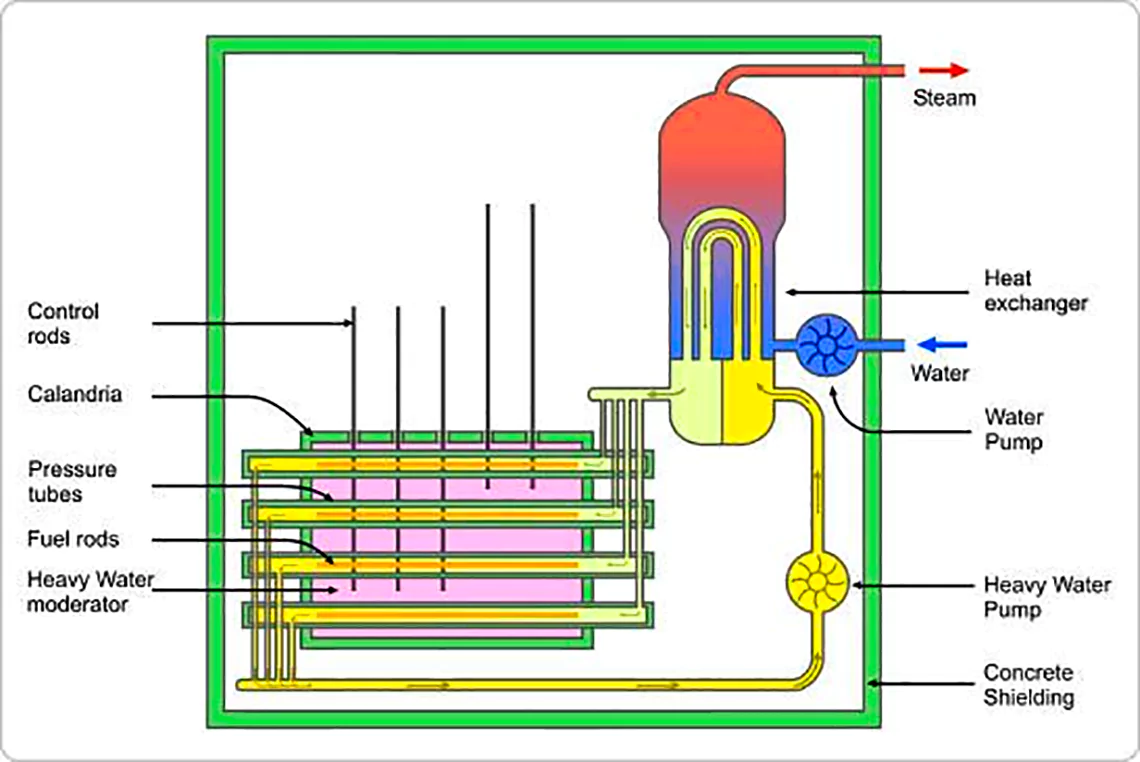Context: The fourth unit of the Kakrapar Atomic Power Project (KAPP-4) in Gujarat, with 700 MWe capacity, started controlled fission chain reaction and thus became critical.
About Kakrapar Atomic Power Project (KAPP)
- Kakrapar Atomic Power Project is built by the Nuclear Power Corporation of India Limited (NPCIL), a public sector undertaking of the Department of Atomic Energy.
| A pressurized heavy water reactor (PHWR) is a nuclear power reactor, commonly using unenriched natural uranium as its fuel, that uses heavy water (deuterium oxide D2O) as its coolant and moderator. |
- These reactors are Pressurised Heavy Water Reactors (PHWRs), which use natural uranium as fuel and heavy water as coolant and moderator.
- Coolant: A substance circulated through a nuclear reactor to remove or transfer heat.
- The most commonly used coolant in the is water.
- Moderator: A material, such as ordinary water, heavy water, or graphite, that is used in a reactor to slow down high-velocity neutrons, thus increasing the likelihood of fission.

About Criticality and Nuclear Fission
- A reactor achieves criticality, when each fission event releases a sufficient number of neutrons to sustain an ongoing series of reactions.
 The first criticality is the start of a controlled fission chain reaction.
The first criticality is the start of a controlled fission chain reaction.- This is what KAPS-4 achieved. After the fission, the heat is used to make steam that turns a turbine and produces electricity.
- Process: When a neutron (a particle with no electric charge) hits an atom like Uranium-235, and splits it into smaller atoms. This process is called nuclear fission, and it releases a lot of heat that can be converted into energy.
- Fissile Choice: Uranium-235 is chosen for nuclear power due to its ease of splitting.
- Regulatory Approval: The criticality test was approved by India’s nuclear regulator, Atomic Energy Regulatory Board (AERB).
Significance:
- Signifies a crucial step in the operational readiness of the nuclear power plant.
- Efficient and continuous production of electricity through nuclear fission.
Also Read: Nuclear Power Plants In India 2023, here.
![]() 18 Dec 2023
18 Dec 2023

 The first criticality is the start of a controlled fission chain reaction.
The first criticality is the start of a controlled fission chain reaction.